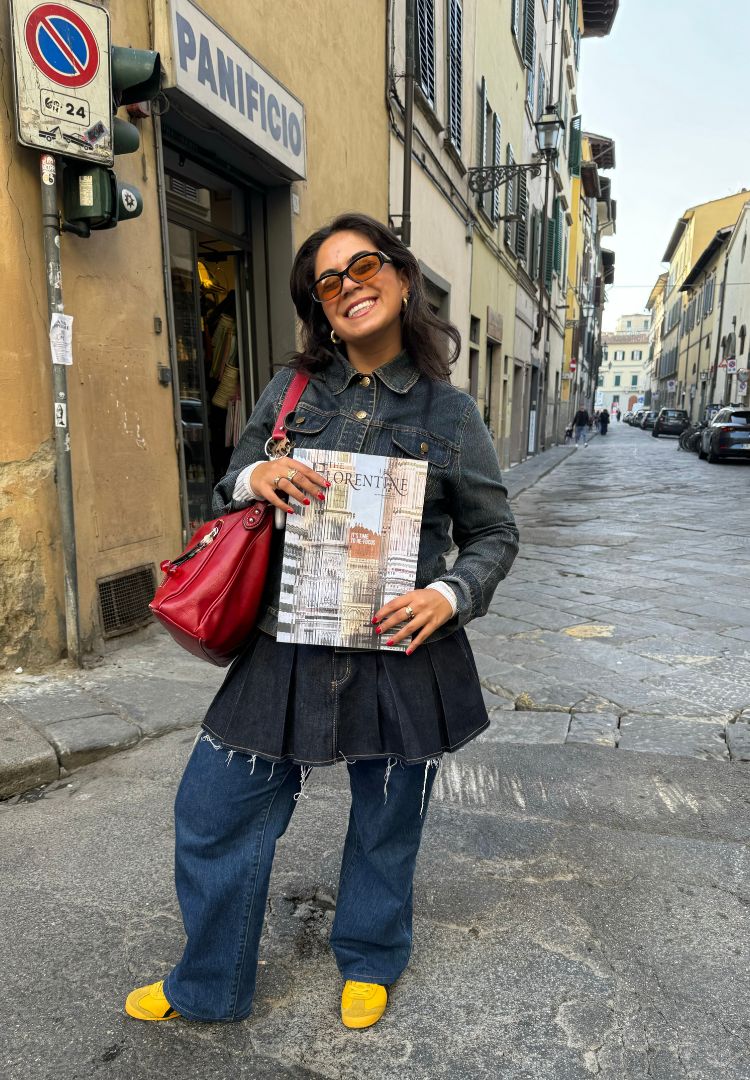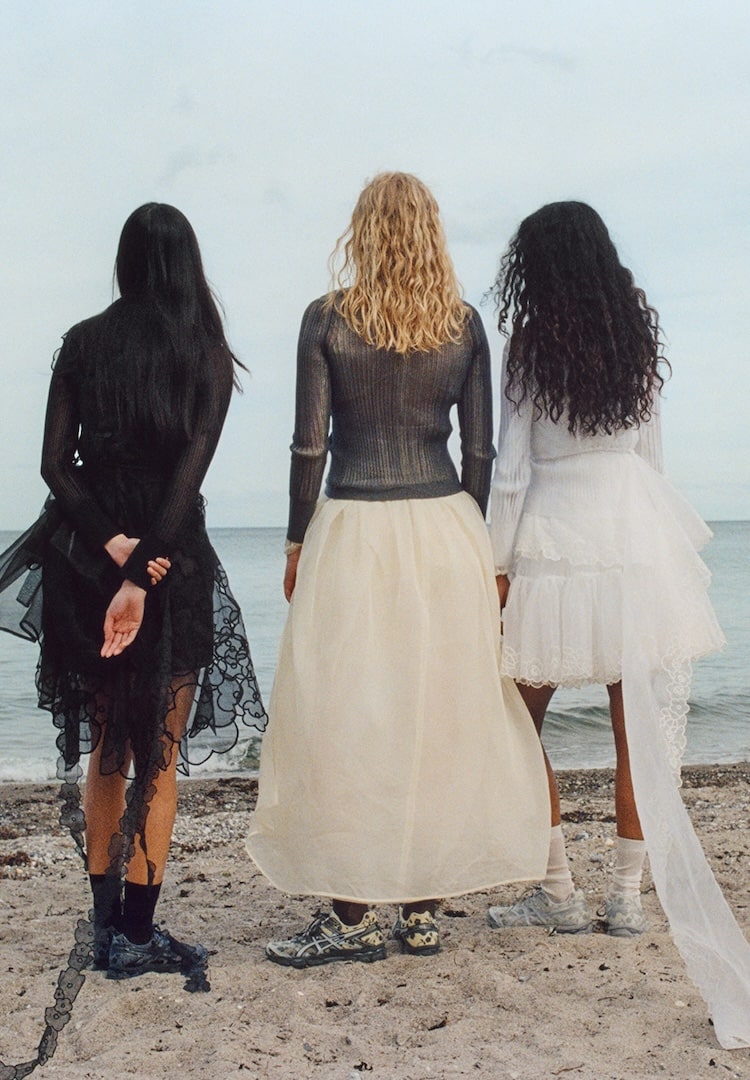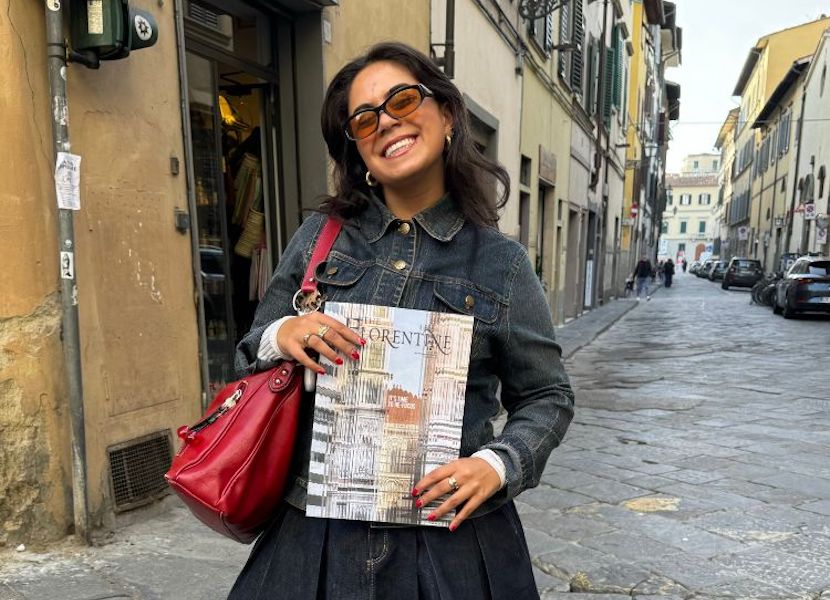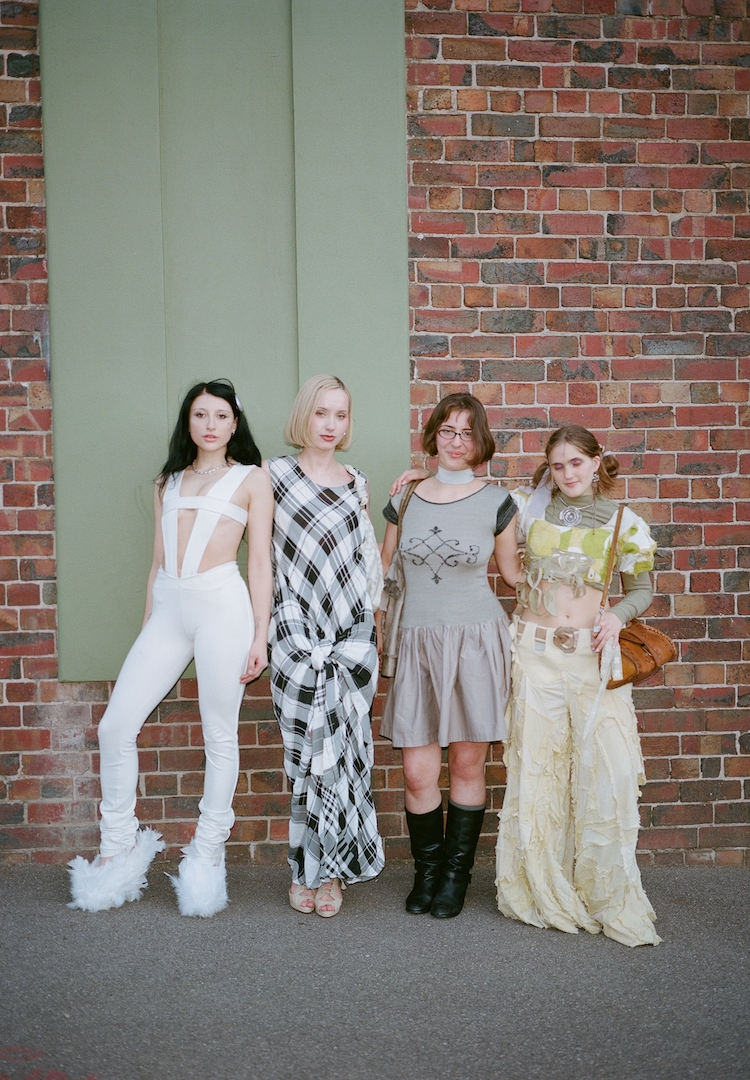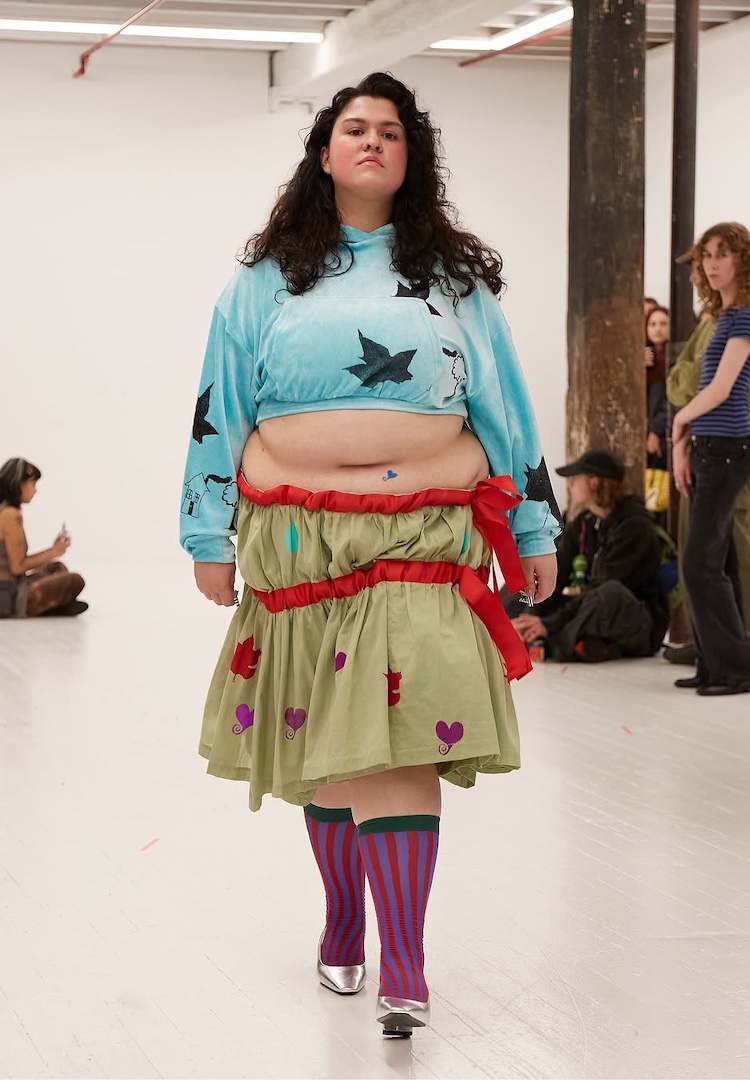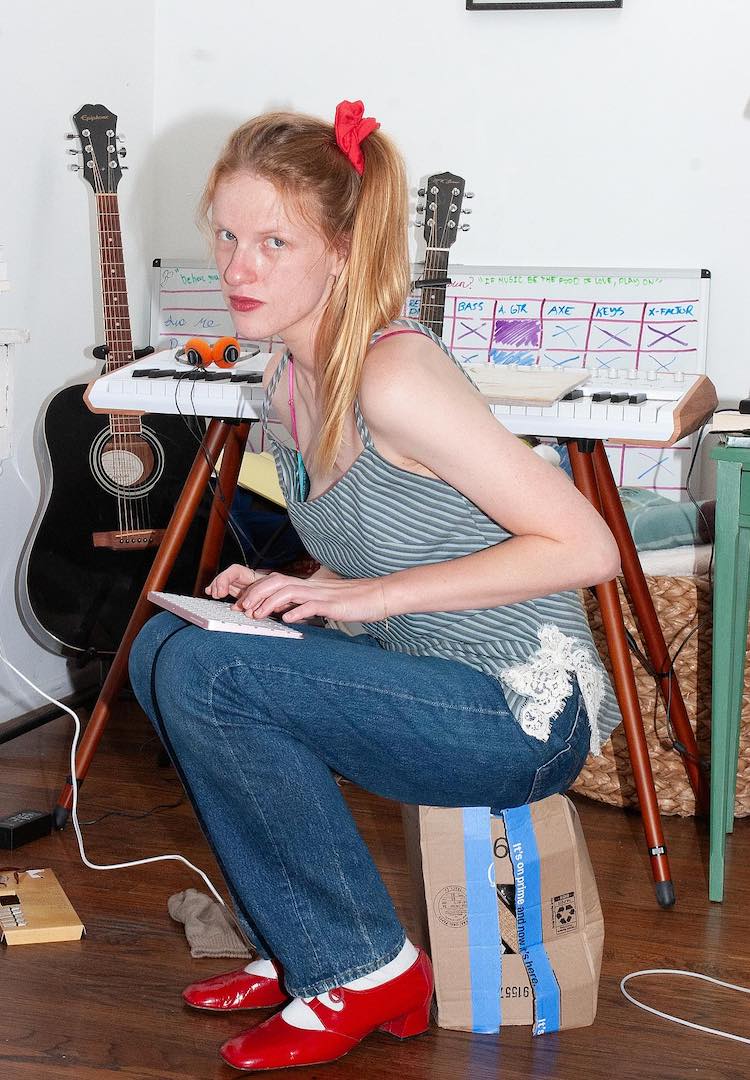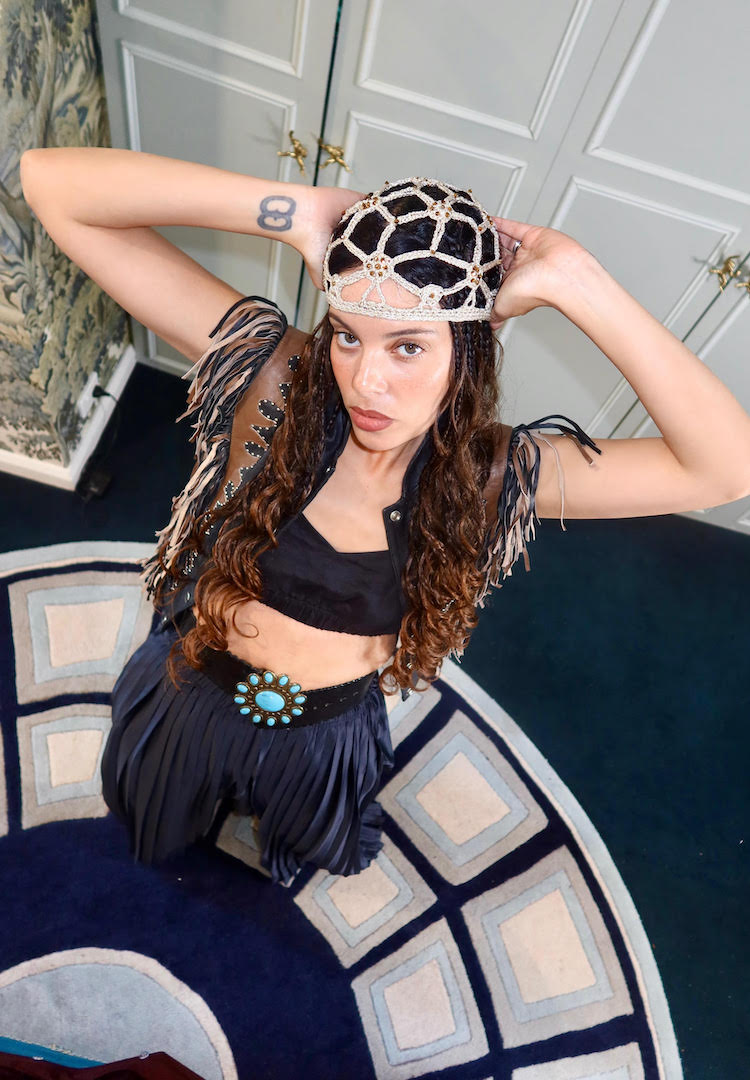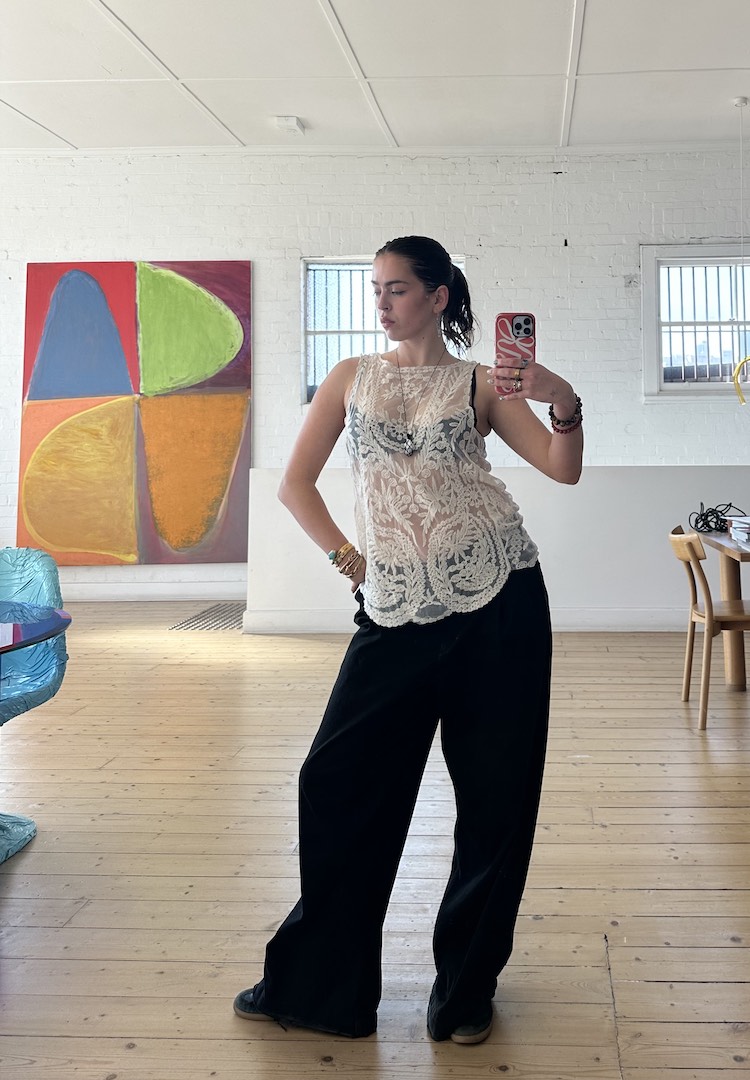What living out of a suitcase for 10 months overseas taught me about styling
Photography and Words by CLaudia Goundar
A wardrobe on wheels is more abundant than you think.
I was a walking mishmash of summer flea market purchases: a red plaid mini skirt layered over wide-leg, light-washed jorts, a white frilly blouse, unironed, under a leather bomber jacket and black biker boots stomping out any hope of cohesion.
At first sight, it was an utterly ridiculous collision of textures and seasons. But after a second glance in the mirror, I changed my mind. When I arrived at work, my Brazilian Portuguese colleague, Pedro Barros, greeted me with pincering crab fingers and an operatic “purr,” endorsing my chaotic ensemble.
For more fashion news, shoots, articles and features, head to our Fashion section.
I was two weeks into my three-month internship at the Peggy Guggenheim Collection and I’d already exhausted my autumnal outfits. My frustration with my monotonous style (and necessity for extra warmth as the temperature in Venice took a nosedive) led me to reach into my battered suitcase and pull my summer clothes out of hibernation.

The aforementioned chaotic ensemble.
A minimal wardrobe, thrust upon me by the confines of my luggage, became a surprising instigator of stylistic freedom. Seeing my clothes in a new light, I began layering them over winter wear, liberating them from their intended function.
I’m no stranger to living out of a suitcase. Thanks to my habit of moving overseas, I’ve spent the most past of every second year operating without a full wardrobe and it’s taught me an important lesson about my own style, and my consumption habits. Having a Carrie Bradshaw-sized closet doesn’t make getting dressed any easier – in fact, Australians reportedly only wear half of their wardrobes regularly. On the other hand, creativity thrives under constraint.
Noticing that two of my colleagues at the Guggenheim rarely repeated outfits, yet were equally storage-limited, I spoke to them, as well as a hobbyist modular clothing designer about their creative styling tactics.
Accessories, collared shirts and sleeveless tops are your unsung heroes
Elly Murray Brown, a British colleague of mine at the Guggenheim, had a reliable uniform of slightly oversized, worn tweed and big shoulder pads – a signature style she describes as “someone who’s spent too long rummaging through an old attic.”
But a scarcity of wardrobe rations prompted Elly to style her trusted outfits in different ways. She didn’t abandon her grandpa-chic style, instead, she dialled it up by layering on accessories, far more than she’d normally wear back home in London. Colourful scarves, baker boy hats and bulky statement necklaces that swung below the neckline made every outfit feel new, even if the base was the same.
Each combination of Elly’s collared shirts – puffed sleeves, stripes and solid colours – rotated under sleeveless tops and vests, giving the illusion of entirely new pieces (undetected by most, except to a fellow wardrobe shapeshifter like me).

Elly Murray Brown, master of inventive styling.
Aside from creative styling, Elly’s other knack for curating a wardrobe on wheels lies in her attention to quality. I learnt this on a shopping trip together, watching her vet and scrutinise the garment tag before declaring, “absolutely not” in her plummy London accent to anything made from scratchy or environmentally villainous polyester. She’s walking proof that old items were made to last, wearing mainly vintage clothing and a pair of shoes her mum bought from Rome in the ’70s.
Let outerwear do the heavy lifting
Another Guggenheim colleague, Asimina Traka, born in Greece but claiming to be an Amsterdam local, would stroll into work without haste, her arrival announced by a whiff of musky fur. Asmina was armed with an enviable collection of coats, including fur, leather, and my favourite – a puffer jacket with a detachable scarf that resembled a sleeping bag. It didn’t really matter what she wore underneath, the outerwear was the outfit in itself.
But challenged by the confines of her suitcase, Asimina’s style, defined by a hybrid of streetwear grit and feminine elegance, also evolved. “I used to not wear so many layers. Dresses with pants were not my thing yet, but I came to love it,” she says.

Asimina Traka, outerwear queen.
Away from her plentiful wardrobe, she experimented with combinations she’d never dare to wear back home. Asimina also made a convincing case for wearing garments inside out and backwards.
For her, comfort was non-negotiable; she had a talent for turning couch attire into stylish, statement looks, including hoodies underneath sheer tops and silver belts cinched low at the waist over track pants with heeled boots (that she swore were comfortable).
Modular garments are your clever shapeshifters
While travellers and overseas stint-goers choose to temporarily live out of a suitcase, former Hong Kong resident Mei Ling Lam was forced to live out of one. Crammed into a 37-square-metre micro-flat in government housing, Mei stored garments in her suitcase according to the season while her preferred items – maxi skirts, blouses and casual silk dresses – hung in a portable zip-up wardrobe for daily access.
Limited land availability and high population density in Hong Kong has led to vertical urban development, making living spaces much smaller than average. For Mei, excessive garments became both a luxury and a sacrifice as clothes had to be stored away to make space for necessities.
“We really had no space to buy new things,” she says. While she no longer resides in Hong Kong, Mei’s 19-year-old daughter, Katelyn Hon, was so inspired by her mother’s ability to stay stylish with limited garments that she created her own wardrobe with fewer hangers. With a passion for sewing and an eye for utility, Katelyn has designed multifunctional clothing to minimise space, eliminating the seasonal wardrobe shuffle.

One of Katelyn Hon’s modular designs.
Katelyn’s detachable designs are inspired by East Asian fashion, rooted in cultural traditions and adapted for warm climates, and are all modular by design. These garments are the ultimate shapeshifters; her white linen V-neck blouse features buttons above the elbow, allowing it to transition into a T-shirt, while her rayon khaki wide-leg pants are a button and loop away from breezy shorts – an elegant version of hiking zip-offs.
Not only can modular clothing be stylish, thanks to detachable features like buttons and other ornaments, it also provides more variety in one piece.
A seasonal collision: layer with summer items
My experimental approach to styling dwindled upon returning home to my plentiful wardrobe. Ironically, the fuller my closet, the less inspired I was. My chaotic red plaid skirt outfit prompted an exploration of layering my dormant summer clothes – miniskirts over long shorts, dresses over pants, miniskirts over dresses, stockings under shorts, even tops of different shapes stacked over each other. The combinations kept multiplying.

To escape my outfit monotony, I began styling pieces against their intended function: a long midi skirt became a strapless dress, belted to cinch in the excess fabric around the waist. I fashioned a collared shirt into a skirt, with a bit of strategic buttoning and tying.
I figured out how to repurpose a long-sleeve top as a halter (a quick TikTok search will elicit a tutorial). I wore my tops backwards (cut off the tag to avoid chest irritation or visibility) and, in moments of desperation, I even tied up a sweater and wore it as a bag.
As per Asimina’s optimistic philosophy, “As long as you have a mirror, you can combine anything”, the contents of my battered suitcase became an abundant wardrobe on wheels.
For more on travel wardrobes, try this.


